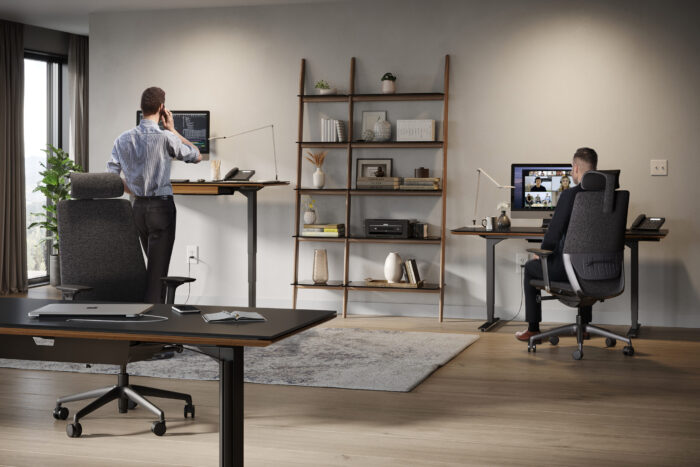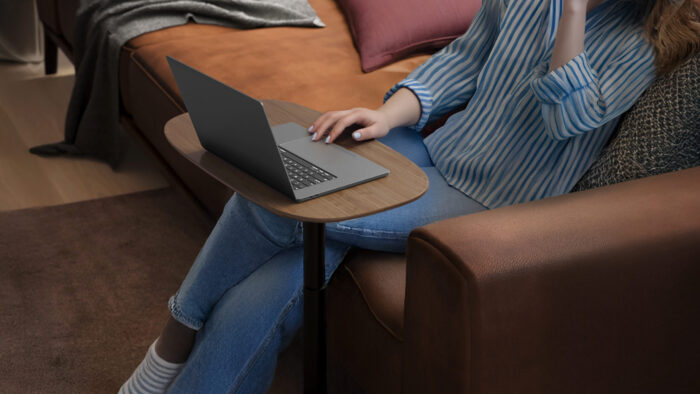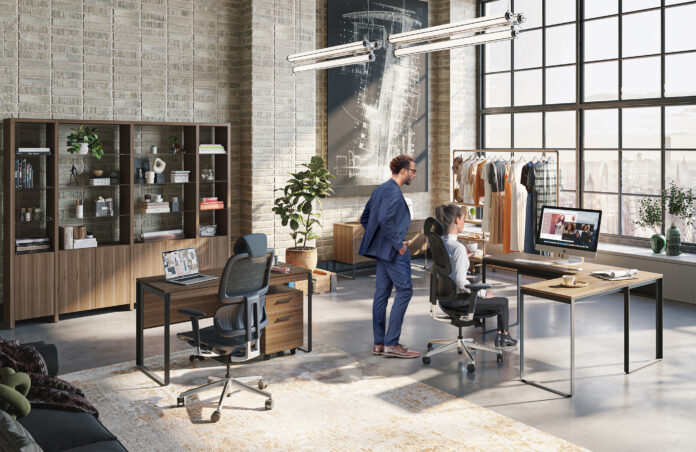By BDI Furniture for Home Business Magazine
Remote work is no longer a novelty—it’s a standard workday. With more professionals working from home full- or part-time, today’s living spaces are being pushed to evolve into work environments. But when more than one person in a household needs a productive setup, the challenge becomes even greater: how do you create distinct, functional work zones within a shared home?
The solution lies in designing multi-use spaces that are intentional, adaptable, and centered around real-life needs. Whether you’re navigating limited square footage or simply looking to upgrade your home office arrangement, the key is thinking flexibly and designing smart.
Think in Zones, Not Rooms
One of the first shifts to make when designing a shared home workspace is to stop thinking about rooms in the traditional sense. Instead, adopt a zone-based approach. This means identifying areas in your home that can serve dual—or even triple—purposes depending on the time of day and who’s using them.
A guest room can double as a video call studio. A hallway niche can host a standing desk setup. Even an unused dining corner can transform into a semi-private work nook with the right furniture and layout. These zones don’t need to be large, but they do need to be clearly defined.
Try using rugs, lighting, or shelving units to visually separate spaces. Establishing physical distinctions within a room helps delineate work from leisure—and minimizes conflict when more than one person is trying to concentrate.
Balance Privacy and Collaboration
Shared work environments need a delicate balance between connection and separation. While it’s convenient to work alongside a partner or roommate, it’s important that each person has their own sense of autonomy.
Privacy can be enhanced in subtle but effective ways. Acoustic panels, area rugs, and soft furnishings reduce ambient noise, making overlapping Zoom calls more tolerable. Freestanding bookshelves or folding screens offer quick visual dividers. Even noise-canceling headphones or agreed-upon “quiet hours” can help foster focus when distractions are high.
If space is tight, schedule “hot desk” time slots or consider rotating locations throughout the day—one person takes the main work area in the morning, while the other shifts in during the afternoon. Flexibility is your greatest asset.

Choose Multi-Functional, Space-Savvy Furniture
When you’re outfitting a shared home office, every piece of furniture should pull double duty. Look for pieces that offer flexibility and smart storage—like desks that close into compact consoles, mobile file cabinets that can be tucked away, or wall-mounted shelves that keep things organized without eating up floor space.
Height-adjustable desks, modular shelving systems, and convertible seating options also go a long way toward making a room more adaptable. These elements let each user customize their setup to their preferences without a major redesign.
Even within small apartments or homes, furniture that respects space—and enhances function—can transform a chaotic area into a calm and efficient workspace.
Prioritize Good Ergonomics for Everyone
When more than one person works from home, it’s easy to cut corners on ergonomics—someone ends up at the kitchen counter with a bar stool, or working long hours at a makeshift desk. But poor posture leads to discomfort and reduced productivity over time.
Each person needs an ergonomic chair, proper lighting, and access to a setup that allows for healthy alignment. If you’re working with limited space, opt for compact ergonomic solutions like footrests, portable laptop risers, or task chairs that offer full back support but with a smaller footprint.
Taking care of the physical needs of each user isn’t just about comfort—it’s about supporting long-term well-being and focus.

Stay Organized and Tech-Ready
When multiple people share work environments, clutter becomes the enemy of productivity. Cables, accessories, and personal items can quickly take over. Invest in cord management systems, under-desk trays, and storage that keeps essentials close but out of sight.
It’s also helpful to standardize your tech setups where possible. Docking stations, shared charging hubs, and cloud-based storage systems can help prevent conflicts and keep everyone plugged in without chaos.
Create a habit of resetting the space at the end of the workday—restoring items to their places and prepping the area for the next morning. That small ritual can help create a mental boundary between work and home.
Embrace a Culture of Flexibility
Above all, the secret to successful multiuse spaces is adaptability. Needs change—sometimes daily—and your home workspace should be able to change with them. Designing with flexibility in mind doesn’t mean sacrificing style or comfort. It means creating environments that respond to your life, not the other way around.
With thoughtful planning and multi-functional design, home work environments can support multiple professionals under one roof—without anyone feeling like they’re working in a shoebox—or battling for desk space. The future of remote work is shared, flexible, and smartly designed.
Find a Home-Based Business to Start-Up >>> Hundreds of Business Listings.














































